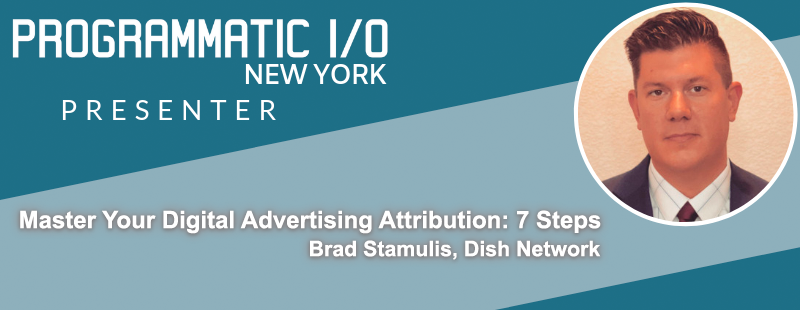Master Your Digital Advertising Attribution: 7 Steps

Don’t pay for ads your customers don’t see.
Pretty basic, right? Makes logical sense?
The rest of the marketing world thinks so too, but for some reason digital advertising hasn’t gotten on board.
Today, 70-85% of consumers are served no more than one viewable display impression during a given campaign.
This means that a) you’re attributing conversions to ads your consumers don’t even see, and b) you’re paying for those ads as if they were!
Although advertiser pushback is shifting this industry standard, change is slow.
In the meantime, you need to rework your attribution to get a clear picture of ad viewability, and optimize your spending away from ads that appear below the fold.
How? By returning to basic attribution best practices.
HOW TO: Tweak your attribution to optimize ad viewability & spending
1. Use view-through attribution to maximize the data you’re giving to your algorithm
Some marketers resist view-through because they think it “gives the ad all the credit.” But it’s not about the ad, it’s about gathering as much data as possible in order to optimize your returns.
Get the clearest picture with fractional attribution for both online and offline sales →
2. Use viewability tracking on a daily basis to avoid cookie bombing
If you’re using view-through attribution, daily viewability tracking is a MUST. Without it, served ads will have falsely inflated conversion rates and lower costs, which in turn throws off your bidding.
Overcome cookieless tracking with user IDs →
3. Don’t limit yourself to direct buys or viewable impressions to escape the viewability challenge
Viewable impressions guarantee a user sees your ad, but you’ll have to pay for the convenience — for most situations it’s a non-scalable fix. For direct buys, while they historically had higher viewability, the gap is steadily shrinking →
If you’re really worried, use video ads — they have 18% higher viewability on desktop, and 31% on mobile.
4. Use pre-bid viewability monitoring and set a baseline risk threshold
You’ll want to keep your predictive model set at just above your industry average, that way when the algorithm thinks an ad likely won’t be viewable, you don’t bid on it in the first place.
The good news is that all major DSPs have a pre-bid viewability setting option, you just need to specifically request it.
5. Combine that with post-bid viewability reporting to optimize your ad spend moving forward
Post-bid viewability tells you what you paid for and allows you to optimize away from any ads that weren’t viewed. You may even be able to remove attribution from those impressions entirely.
Major DSP’s also accept partner tags for post-bid reporting. Again, you’ll have to set this up directly with the DSP.
6. Combine CPO, viewability, and fractional credit into a single adjusted metric: vCPO
Humans shouldn’t be making a subjective call about which metric matters most for a particular campaign. Instead, combine them into one standard metric: vCPO (viewable adjusted cost per order)
You can also do this for vCPC, vCPCV, cCPM, whichever you prefer.
NOTE: This assumes a CPM model; it does not work for a CPA model.
7. Expect CPMs to rise — it’s a reflection of your actual ad performance
The truth is, you always had high CPMs, you just couldn’t accurately measure them before. Make sure to explain this to your boss and set expectations ahead of time. As long as your sales are outstripping your CPM, there’s no problem.
Full Presentation: https://youtu.be/OAFGhM0Jex8







